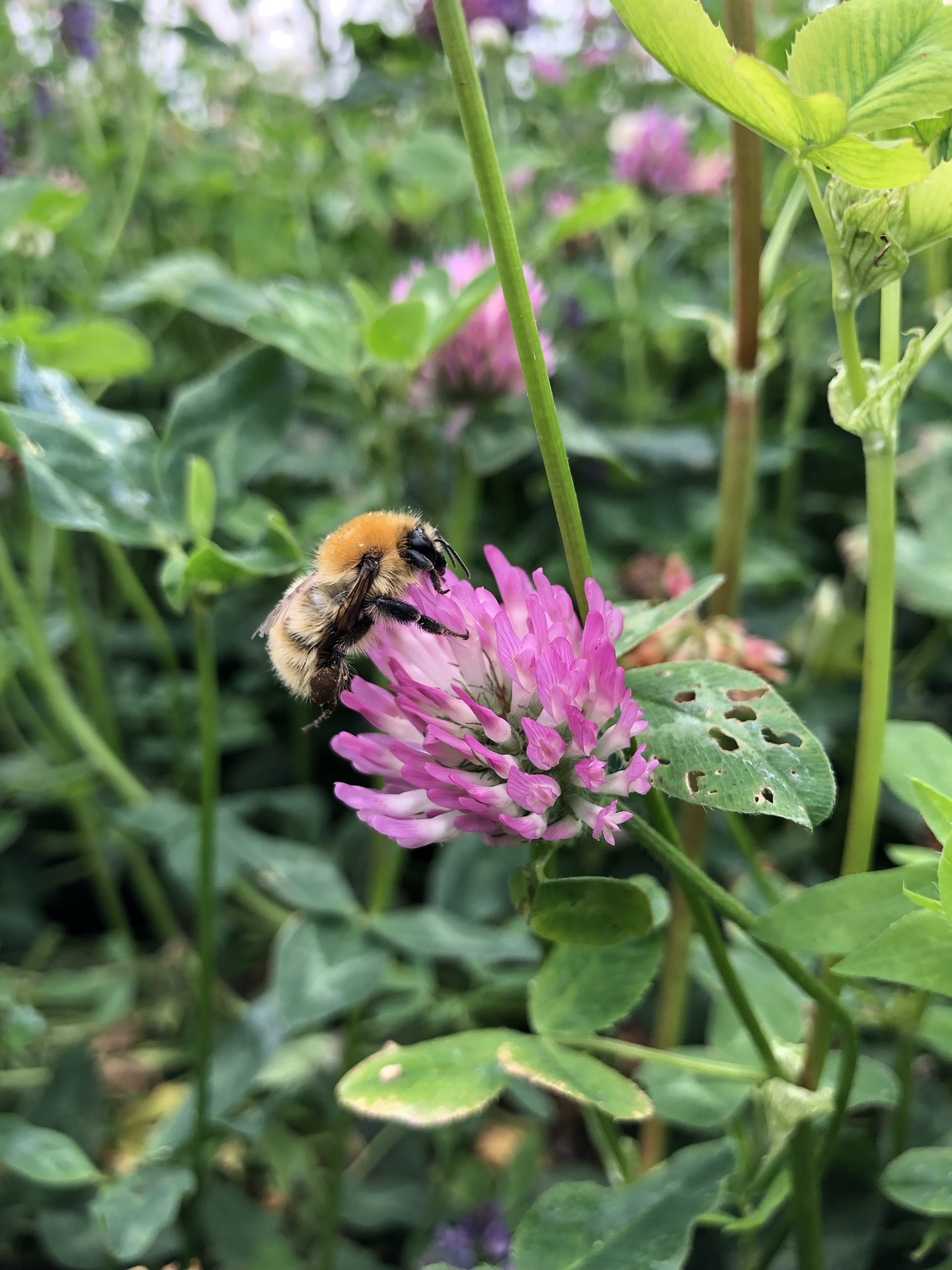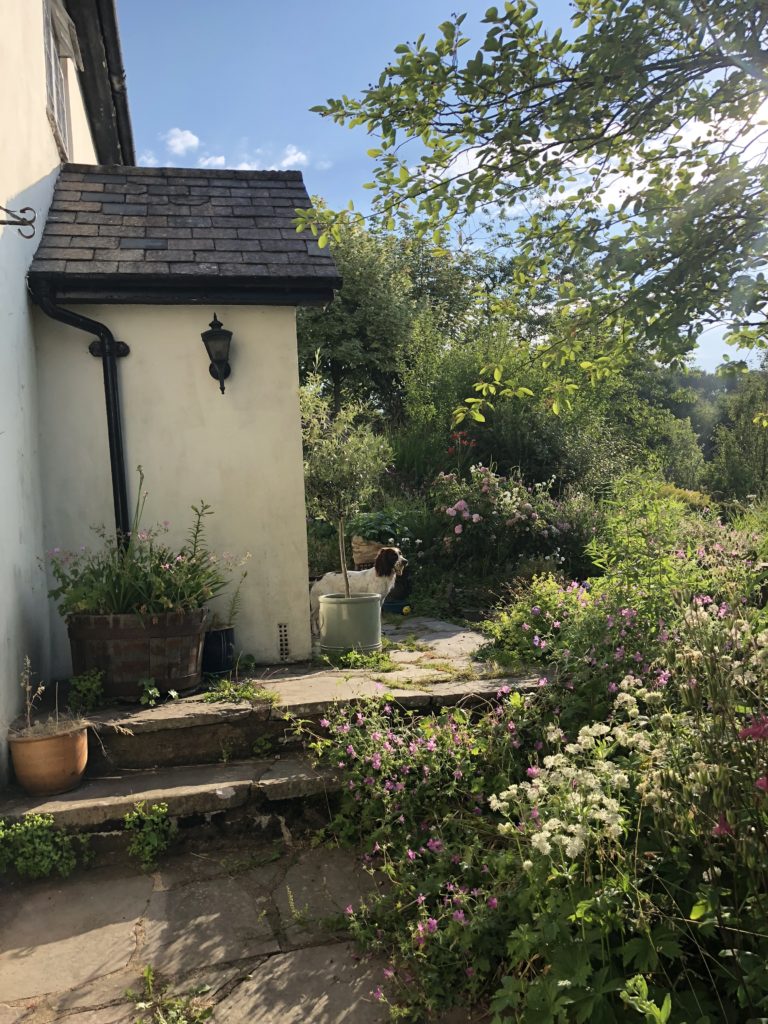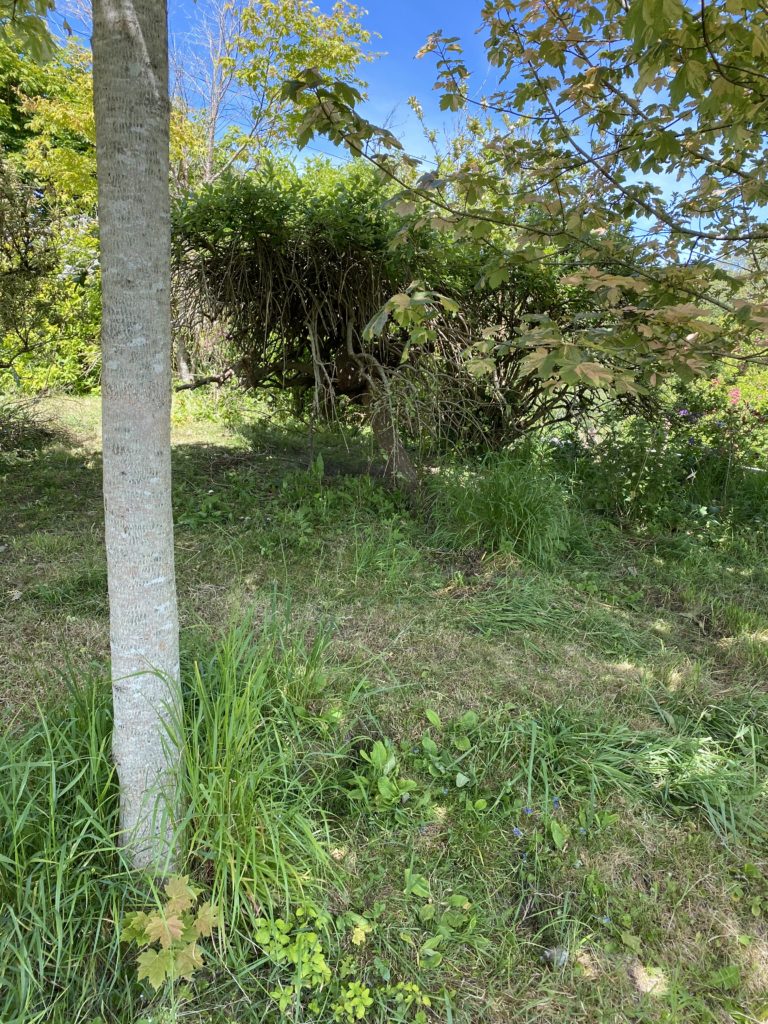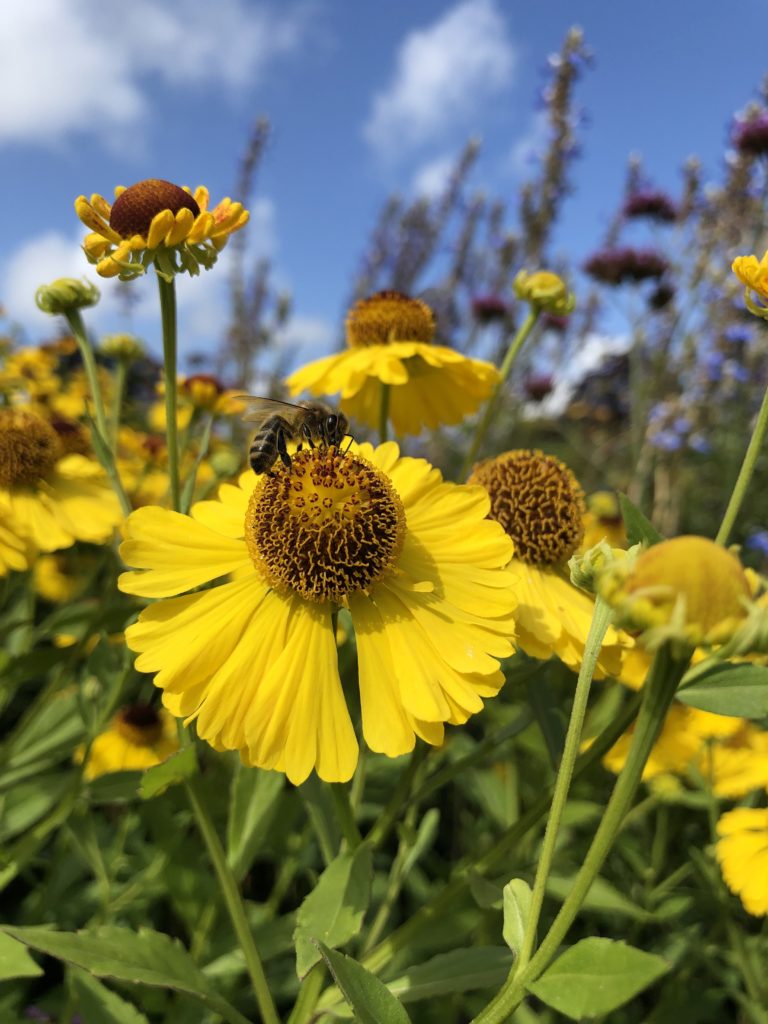We have so many plans for the garden this year {which I am hoping to blog about soon, so will link here when its ready} but one thing that is important to me is creating a space that works as a garden but is also wildlife friendly, particularly bee friendly. I’m not just talking about honey bees here but providing for all pollinators big and small so from our largest humble bumble to smallest solitaries. The actual requirements for bees is relatively simple needing three primary things: a) somewhere to call home, b) something to eat and c) mates {I’m talking lovers here not just friends}. Of course, there is nothing you can do about number three but by helping to provide a home and food then the rest should take care of itself.
Now, you may wonder what makes me qualified to talk about bees and why on earth I’ve decided to write a blog post on how you can also make your garden bee friendly. Well, other than a general interest in the subject something I haven’t really mentioned before is that I work in conservation. More specifically though, bumblebee conservation! It’s a job that I really love and so thought whilst I’m on maternity leave I could share some of my knowledge with all you Mud, Wellies and Moor followers.
Please note that there is lots of facts and figures I could have included in this blog, but to keep things a bit simpler (and not overwhelming) I haven’t gone into the nitty gritty too much. Because of this if you have any questions please don’t hesitate to ask on here or over on Instagram. If I don’t know the answer I’m pretty sure I know someone who will! I also want to say that where I say bees this is being used as a collective for all our UK bee species.

So, gardening for bees where do you start?! Well I guess first and foremost the most important thing to remember is that no matter how big or small your garden is from one window box to 200 acres everyone can get involved. The below is just lots of suggestions feel free to use them as much or as little as you’d like, nonetheless if you can include even just one bee friendly plant in your garden that’s a win to me and not to quote Tesco but ‘every little helps!’

Providing somewhere to call home
Whilst honeybees have hives to live within our wild bees use various spaces depending on the species. All bumblebees except for the tree bee (you can probably guess where they live) nest either on the surface or slightly below ground. Those underground, will utilise old small mammal burrows and places similar to that, whilst those above ground will nest in tussocky grass using old bits of moss and grass to make a nest ball. They are sometimes also found in random places such as inside old straw bales, compost heaps and the best one I’ve ever been told was a colony living within a feather pillow in someone’s shed! Solitary bees on the other hand, nest in lots of different places depending on the species. Some will mine underground, others use small holes in walls there is even one species that uses old snail shells how amazing is that.
So, to provide for everything you need a little variety in your garden! Most wildlife books will ask you to leave an area to go ‘wild’ and grow up, this will provide that long grass for bumblebees but you also need areas of short grass for mining bees, bare earth (preferably with light soils on a south facing bank), dead wood and not forgetting if you’ve made one your bee hotel! I know it sounds complicated and you may not be able to provide all of these but you probably already have suitable areas without even knowing it! For example, since we’ve had this beautiful weather I’ve noticed whilst having lunch on the lawn, we have a White-tailed bumblebee nest in our garden. There is a small crack in the lawn which they have been going in and out of, eh voila a home created without even doing anything!

It may not look like much but inside the crack in the ground besides the tree trunk there is a bumblebee nest
Planting for bees
When considering what plants, you’re going to put or keep in your garden this year why not choose some that will not only look and smell amazing but provides for wildlife.There are three main things to consider when choosing your bee-friendly plants is:
- Will they provide a food source? – Food-wise bees need two things: pollen and nectar. Pollen provides a source of protein which is used to raise the young whilst nectar is equivalent to sugar. Now I wouldn’t blame you for thinking that all plants provide pollen and nectar after all that’s what we were taught at school right? But unfortunately, due to years of breeding to look beautiful, some have lost the ability to provide these or are now too complicated for insects to get access to them. None the less, there are still lots of plants that can be a bee’s restaurant! Generally, you can’t go wrong with your old, traditional cottage garden plants like foxgloves, aquilegia (aka Grandma’s bonnets), lavender, verbena or comfrey.
- When they will be in bloom? – Bees can be found out and about throughout the year (majority from March to October), it is therefore important to ensure there is food available for them throughout this time. Early flowering might include species such as daffodils, pulmonaria or white deadnettle (not a weed!), Summer plants like scabious, echinops, and vipers bugloss whilst in autumn Sedum, cosmos and sun flowers are all bee-utiful choices {if you’ll pardon the pun}.
- What is the shape of the flower? –Bumblebees & honeybees will drink nectar through their tongues, whilst a honeybee has a tongue averagely of 6mm a bumblebee can vary depending on its species anywhere from 6 – 20mm! Those with long tongues will prefer longer tubular flowers such as honeysuckle, whilst those with shorter tongues prefer something a bit more open and easier to get into such as raspberries. It is also important to have some ‘open top’ flowers like dandelions as solitary bees will sit on top of these to collect the pollen.
There are lots of websites with extensive lists of bee friendly plants but here are just a few to get you started:
Spring (Mar – May)
- Grape Hyacinth
- Clematis
- Pulmonaria
- Dandelions
- Daffodils
- Crocus
- Apple Blossom
- Hawthorn
- Pussy Willow
- Broom
Summer (June – Aug)
- Cornflower
- Knapweed
- Hollyhock
- Vipers Bugloss
- Foxglove
- Heather
- Musk Mallow
- Hebe
- Peony
- Scabious
- Red Clover
- Meadow Cranesbill
Autumn (Sept – Oct)
- Sedum
- Dahlia
- Ivy
- Tansy leaf aster
- Sunflower
- Verbena
- Abelia
- Everlasting Pea
I hope this has given you a little inspiration for ways you can help our bees, all 250+ species of them (yes you heard me, theres a lot!).
Yours,
Daisy x
